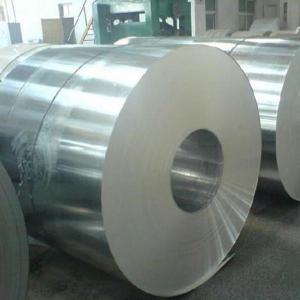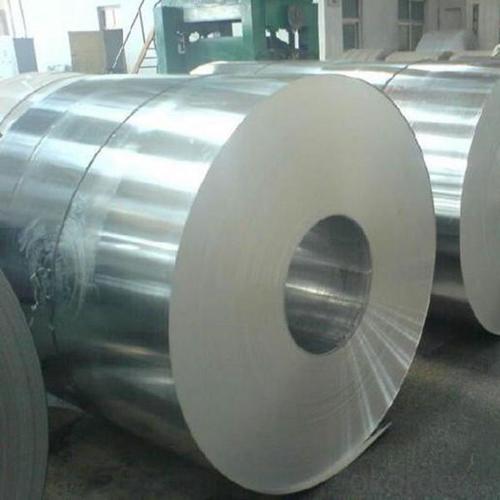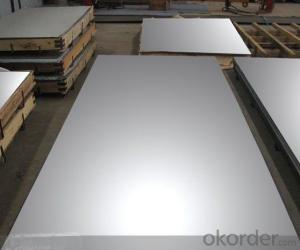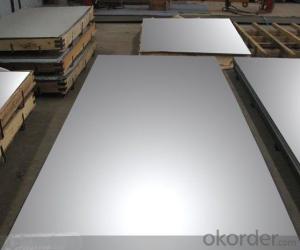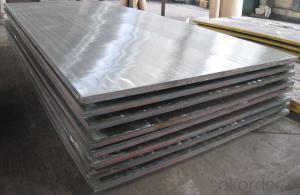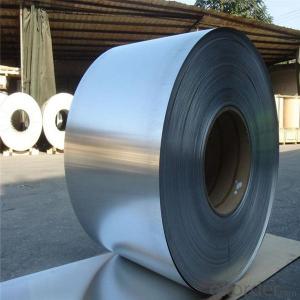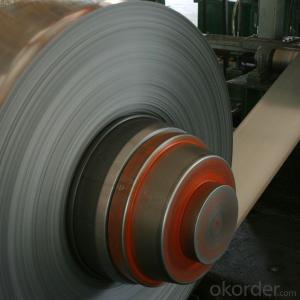Cold Rolled Stainless Steel Coils NO.2B Finish Grade 304 made in China
- Loading Port:
- China main port
- Payment Terms:
- TT OR LC
- Min Order Qty:
- 20 m.t.
- Supply Capability:
- 1000 m.t./month
OKorder Service Pledge
OKorder Financial Service
You Might Also Like
Specification
Cold Rolled Stainless Steel Coils NO.2B Finish Grade 304 made in China
Products Description
Name: stainless steel coils/plates/sheets
Discharge Port: Any Port, China
Cold Rolled Size: thickness0.3-8mm,Width:280-2100mm
Hot Rolled Size: Thickness3-14mm,Width:650-2100mm
Hot Rolled/Cold Rolled Plates : Thickness2-80mm,Width:1500-3000mm
Coil Weight: About 20 Tons
Grade: 201,202,304/304L/304H, 316/316L/316H, 409/L,430 etc.
Technique: Hot Rolled/Cold Rolled
Finish:2B, BA, 2D, No1, No2 etc
Edge: Mill Edge / Slitting Edge
Packaging: In bundles, or as customer's requirement
Place of Origin: Made in China
MOQ: 20 Tons
Payment Terms: 100% LC at sight, or 100%TT in advance
Delivery Time: With 30-40 days after deposit
Packaging & Delivery
Packaging Detail Standard export packing or following customer's demand
Delivery Time: Within 15-20 days after deposit or according to the order quantity
Detail picture of Products:
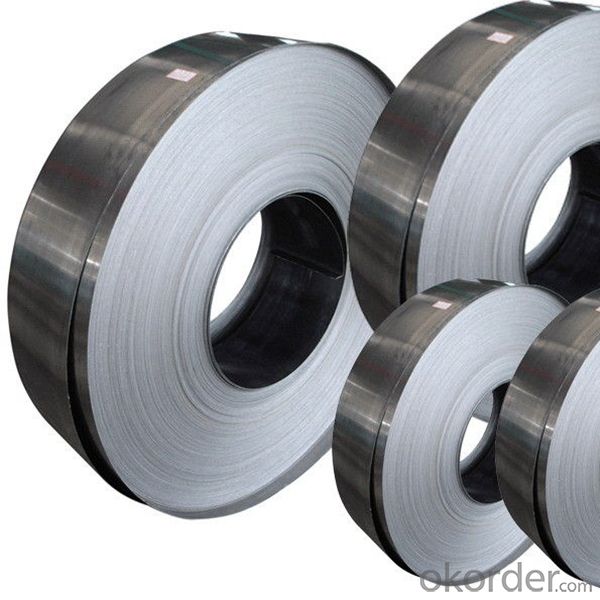
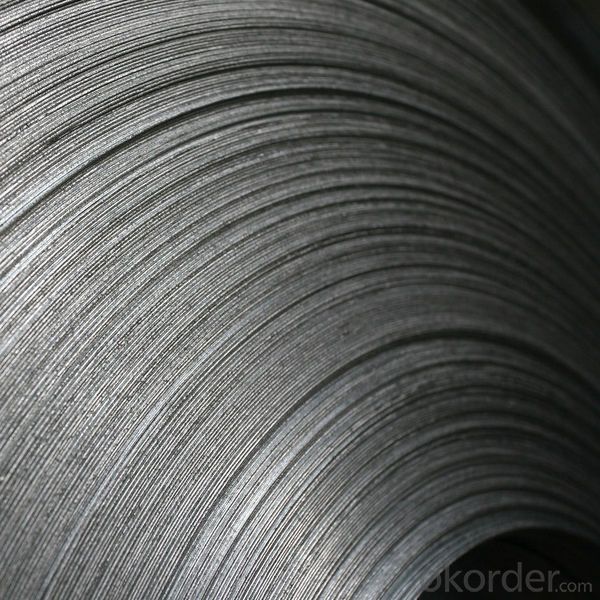
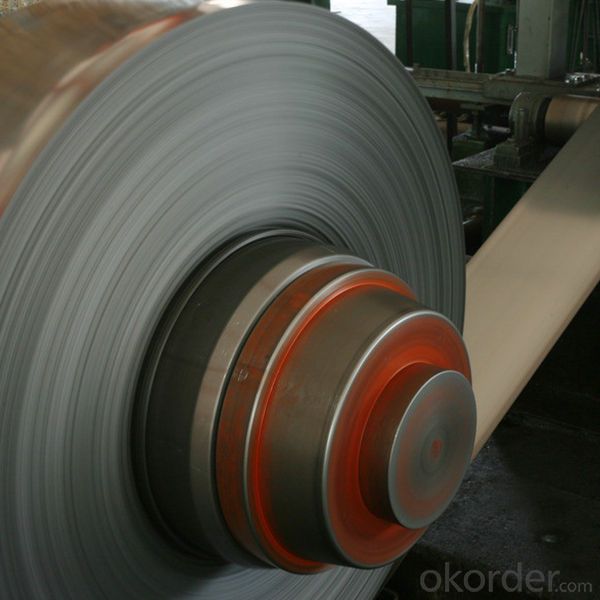
Application
boiler heat exchanger, machinery andpetroleum ,chemical industries, hardware fields,Food industry,construction material,kitchen utensils, building construction, medical equipment,chemical tank, pipe etc
- Q: What is the minimum order quantity for stainless steel sheets?
- The minimum order quantity for stainless steel sheets may differ based on the supplier and the specific product. Nevertheless, it is typical for suppliers to impose a minimum order quantity between 1 and 10 sheets. To select the most suitable option for your requirements, it is crucial to reach out to multiple suppliers and inquire about their minimum order requirements.
- Q: What is the difference between the stainless steel plate and the second board?
- The above points, is to distinguish between the material and the main difference between calendering, the most commonly used is that the card thickness and surface conditions can basically be distinguished
- Q: How do you prevent warping or distortion in stainless steel sheets?
- To prevent warping or distortion in stainless steel sheets, several measures can be taken. First, it is important to properly handle and store the sheets to prevent any bending or twisting during transportation or storage. Secondly, ensuring a smooth and even distribution of heat during welding or fabrication processes can help minimize the chances of warping. Additionally, using proper clamping techniques and supports during machining or cutting operations can help maintain the shape and integrity of the stainless steel sheets. Lastly, adhering to the recommended thicknesses and specifications provided by the manufacturer for specific applications can also help prevent warping or distortion in stainless steel sheets.
- Q: What are the different types of stainless steel sheet surface treatments available?
- There are several types of stainless steel sheet surface treatments available, including brushed, mirror, embossed, and patterned finishes.
- Q: Can stainless steel sheets be recycled?
- Indeed, it is possible to recycle stainless steel sheets. Stainless steel, a material known for its high recyclability, boasts one of the most impressive recycling rates compared to other materials. Once stainless steel sheets have served their purpose, they can be gathered and transported to a recycling facility. The recycling procedure entails melting down the stainless steel sheets and reshaping them into fresh products, all while preserving their original properties and quality. This renders stainless steel an eco-friendly and sustainable material option. Additionally, recycling stainless steel aids in the preservation of natural resources, diminishes energy usage, and reduces waste.
- Q: How are stainless steel sheets produced?
- The production of stainless steel sheets involves a series of manufacturing processes that encompass different stages. To begin with, raw materials like iron ore, coal, and limestone are melted in a blast furnace, which is known as primary steelmaking and results in the creation of molten iron. Next, the molten iron is moved to a basic oxygen furnace (BOF) or electric arc furnace (EAF) where it is combined with scrap steel and other alloys to adjust its chemical composition as desired. The molten mixture then undergoes a refining process to eliminate impurities and attain the desired quality of stainless steel. Once the refining process is finished, the molten stainless steel is cast into large blocks called slabs or billets. These solidified metal blocks are then heated and passed through a series of rollers in a process called hot rolling, which reduces their thickness and shapes them into the desired dimensions. After hot rolling, the stainless steel sheets go through annealing, a process where they are heated to a specific temperature and allowed to cool gradually. Annealing serves to relieve internal stresses and enhance the material's mechanical properties, such as strength and ductility. Following annealing, the stainless steel sheets may undergo further processing such as cold rolling. This process involves passing the sheets through rollers at room temperature to achieve the desired thickness and surface finish. Cold rolling also improves the stainless steel's mechanical properties and enhances its surface quality. Once the sheets have been cold rolled, they are usually coated with a protective film or passivation layer to prevent corrosion. This film acts as a barrier against environmental factors and helps maintain the longevity of the stainless steel sheets. Finally, the stainless steel sheets are cut into the desired sizes and shapes using various cutting techniques like shearing or laser cutting. Additionally, the sheets may undergo additional surface treatments such as polishing or brushing to achieve the desired aesthetic appearance. In conclusion, the production of stainless steel sheets involves melting raw materials, refining the molten metal, casting it into slabs, hot rolling to reduce thickness, annealing to improve properties, cold rolling for further refinement, coating for corrosion resistance, and finally cutting and surface treatment to achieve the desired product.
- Q: Can stainless steel sheets be used for escalator cladding?
- Yes, stainless steel sheets can be used for escalator cladding. Stainless steel is a durable and corrosion-resistant material that can withstand the daily wear and tear of escalator usage. It provides a sleek and modern appearance while also offering protection and easy maintenance.
- Q: What is the difference between stainless steel sheets and stainless steel plates?
- In various industries, stainless steel sheets and stainless steel plates find common use and possess similar properties. However, they differ in terms of thickness and application. Typically, stainless steel sheets exhibit a thinner profile compared to stainless steel plates. These sheets are usually less than 6mm thick and serve decorative purposes, such as in kitchen appliances, automotive trim, and signage. Moreover, they showcase excellent malleability, allowing easy bending and shaping for projects that demand flexibility. In contrast, stainless steel plates boast greater thickness and resilience compared to sheets. These plates usually exceed 6mm in thickness and find extensive application in heavy-duty scenarios like construction, machinery, and industrial equipment. Their increased strength, durability, and corrosion resistance make them ideal for withstanding high temperatures, pressure, and mechanical stress. Moreover, the manufacturing process presents another point of departure. Stainless steel sheets typically undergo cold rolling or hot rolling, resulting in a smooth and flat surface. On the other hand, stainless steel plates are often produced through hot rolling followed by heat treatment, which enhances their mechanical properties. To summarize, while both stainless steel sheets and stainless steel plates share the same material composition, their differing thickness, application, and manufacturing process distinguish them. Sheets exhibit a thinner and more flexible nature, primarily catering to decorative purposes. Plates, in contrast, possess greater thickness, strength, and durability, catering to heavy-duty applications that necessitate robustness.
- Q: What are the different types of stainless steel sheet embossing patterns available?
- There are various types of stainless steel sheet embossing patterns available, including diamond, linen, quilted, hammered, and checker plate.
- Q: How do you prevent intergranular corrosion in stainless steel sheets?
- Intergranular corrosion in stainless steel sheets can be prevented through various methods such as proper selection of stainless steel grade, heat treatment, and appropriate welding techniques. 1. Stainless Steel Grade Selection: Choosing the right stainless steel grade is crucial in preventing intergranular corrosion. Grades with a low carbon content, such as 304L or 316L, are less susceptible to intergranular corrosion compared to higher carbon grades. These low carbon grades minimize the formation of chromium carbide precipitates, which are the main cause of intergranular corrosion. 2. Heat Treatment: Heat treatment processes like solution annealing and quenching can help eliminate or reduce the formation of chromium carbide precipitates. This treatment restores the stainless steel's corrosion resistance by dissolving existing precipitates and promoting the formation of a protective chromium oxide layer on the surface. 3. Welding Techniques: Careful attention must be given to welding stainless steel sheets to prevent intergranular corrosion. Processes like gas tungsten arc welding (GTAW) or laser welding that provide precise control over heat input are preferred. Additionally, using low carbon filler metals or consumables specifically designed for intergranular corrosion resistance can minimize the risk of corrosion. 4. Post-Weld Cleaning and Passivation: After welding, it is essential to thoroughly clean the welded area to remove any contaminants or oxide scales that could promote corrosion. Acid cleaning followed by passivation helps restore the protective oxide layer and enhances the stainless steel's resistance to intergranular corrosion. 5. Avoiding Sensitization: Sensitization occurs when stainless steel is exposed to high temperatures for extended periods, leading to the formation of chromium carbide precipitates. It is crucial to avoid prolonged exposure to temperatures between 450-850°C (842-1562°F) during fabrication or service to prevent sensitization and subsequent intergranular corrosion. By implementing these preventive measures, intergranular corrosion in stainless steel sheets can be effectively minimized, ensuring the longevity and performance of the material in various applications.
Send your message to us
Cold Rolled Stainless Steel Coils NO.2B Finish Grade 304 made in China
- Loading Port:
- China main port
- Payment Terms:
- TT OR LC
- Min Order Qty:
- 20 m.t.
- Supply Capability:
- 1000 m.t./month
OKorder Service Pledge
OKorder Financial Service
Similar products
Hot products
Hot Searches
Related keywords
